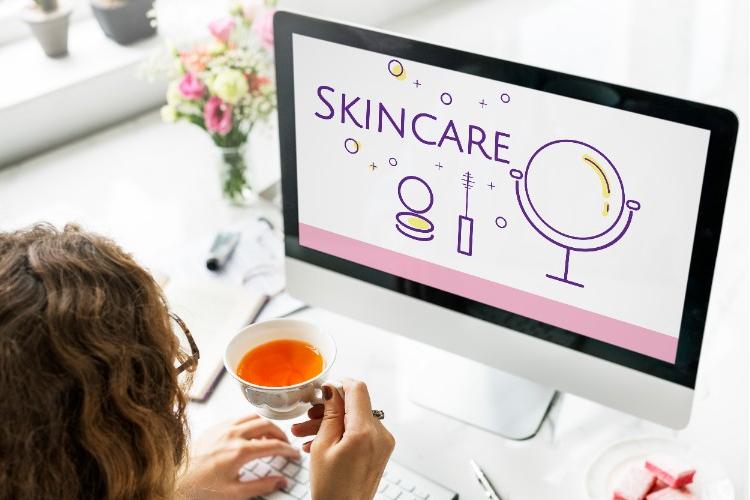Why We Trust MCC for Clear Skin?
Introduction: Our Unexpected Journey with Skin Health
We started with MCC powder as a trusted bulking agent and anti-caking agent for food and pharma. But then we stumbled into something deeper—Microcrystalline Cellulose for Skin and its link to broader health concerns like skin cancer.
As a manufacturer, we never expected to explore topics like sentinel lymph node biopsy or merkel cell carcinoma (MCC). But here we are—sharing what we've learned because skin health isn’t just cosmetic. It’s personal. And sometimes, it's critical.
What Is Microcrystalline Cellulose?
Natural Origins with Multi-Industry Use
We derive microcrystalline cellulose from purified plant fiber—usually wood pulp. In skincare, it:
· Adds volume to creams as a bulking agent
· Prevents clumping in powders as an anti-caking agent
· Supports consistency and smooth application
We designed our MCC powder to be clean, stable, and bio-inert—meaning it won’t irritate your skin or clog your pores. That’s where our comfort with MCC ends. Because skin health doesn't stop at texture.
Skin and Cancer: The Harsh Reality
Why We Can’t Ignore the Risks Anymore
We work with ingredients that touch your skin. So we had to learn about sun-exposed skin and its link to cancer cells.
· Skin cancer is one of the most common cancers
· More people are being diagnosed older than 50
· UV damage increases risks over time
· Certain rare cancers, like Merkel Cell Carcinoma (MCC), are extremely aggressive
If you're over 50 years old and have a history of sun exposure, you might be high risk—especially if your immune system is already compromised.
What Is Merkel Cell Carcinoma (MCC)?
The Silent Threat on the Surface
Merkel Cell Carcinoma is not your typical skin cancer. It grows fast. It hides well. And it often spreads through the lymph nodes.
MCC patients usually discover it by accident—a small bump or firm, painless nodule. But behind that small bump can be:
· Rapid cell division
· Deep infiltration into sun-exposed skin
· Spread to other organs through sentinel lymph node biopsy findings
If caught early, surgical removal can work. But timing is everything.
MCC vs Basal and Squamous Cell Carcinoma
Feature | Merkel Cell Carcinoma | Basal Cell Carcinoma | Squamous Cell Carcinoma |
Growth Rate | Very Fast | Slow | Moderate |
Appearance | Firm pink bump | Waxy or pearly | Scaly or crusty |
Common in People Over 50 | Yes | Yes | Yes |
Lymph Node Involvement | High | Rare | Occasional |
Associated Virus | Merkel Cell Polyomavirus | No | No |
Risk Factors: Are You at High Risk?
It’s Not Just About the Sun
We found several shared risk factors in studies on merkel cell carcinoma and general skin cancer:
· Being older than 50
· Excessive sun exposure without protection
· Fair skin and light eye color
· Immunosuppression or weak immune system
· Previous basal cell carcinoma or squamous cell carcinoma
· History of radiation therapy
· Detection of merkel cell polyomavirus
Our takeaway? Skin care is serious care.
Where MCC Powder Comes In
Connecting Ingredient Use to Skin Context
Now, you may ask—what does our MCC powder have to do with skin cancer?
We don’t claim that microcrystalline cellulose prevents or treats skin cancer. But we believe:
1. Clean, non-reactive ingredients reduce irritation
2. Avoiding harsh chemicals supports immune balance
3. Transparent sourcing builds consumer trust
Our MCC supports formulas used in sun-exposed skin lotions and sensitive-skin sunscreens. And while we’re not oncologists, we think clearer formulas mean fewer unwanted surprises for your skin.
The Role of Surgical Oncology in MCC Patients
When Bumps Turn Into Battles
Patients with merkel cell carcinoma often face tough decisions fast. Surgical oncology becomes the frontline treatment.
Steps typically include:
· Wide local excision to remove the tumor
· Sentinel lymph node biopsy to check for spread
· Additional imaging or radiation depending on results
If you or someone you love falls into the high risk category, early detection saves lives. Don't ignore strange growths, especially if they appear on sun-exposed skin after 50 years.
How We Handle MCC Powder With Responsibility
Safety First. Always.
We manufacture with care because we know where our ingredients end up. That’s why we:
· Maintain low microbial counts in all batches
· Limit trace metals
· Ensure our MCC powder is non-GMO and gluten-free
· Use controlled drying for low moisture (<5%)
· Offer cosmetic-grade options for skin formulations
Our bulking agent and anti-caking agent carry zero fragrance or color additives—just cellulose in its purest form.
Tips for Choosing Safer Skincare Products
We get asked a lot—how can I avoid risky ingredients? Our advice:
· Read labels
· Look for microcrystalline cellulose over talc or unknown binders
· Choose brands with ingredient transparency
· Be cautious if you’re over 50 years and prone to sun exposure
· Don't skip SPF—ever
Trust us, your skin remembers every day in the sun.
Conclusion: Beyond the Powder
We used to talk about MCC powder just as a functional excipient. Now we talk about it with deeper respect.
Because skincare is not just about beauty. It’s about health, immunity, aging, and yes—sometimes even skin cancer.
We don’t pretend to cure. But we promise to care. And we believe even the humblest ingredient can make a difference when handled right.



